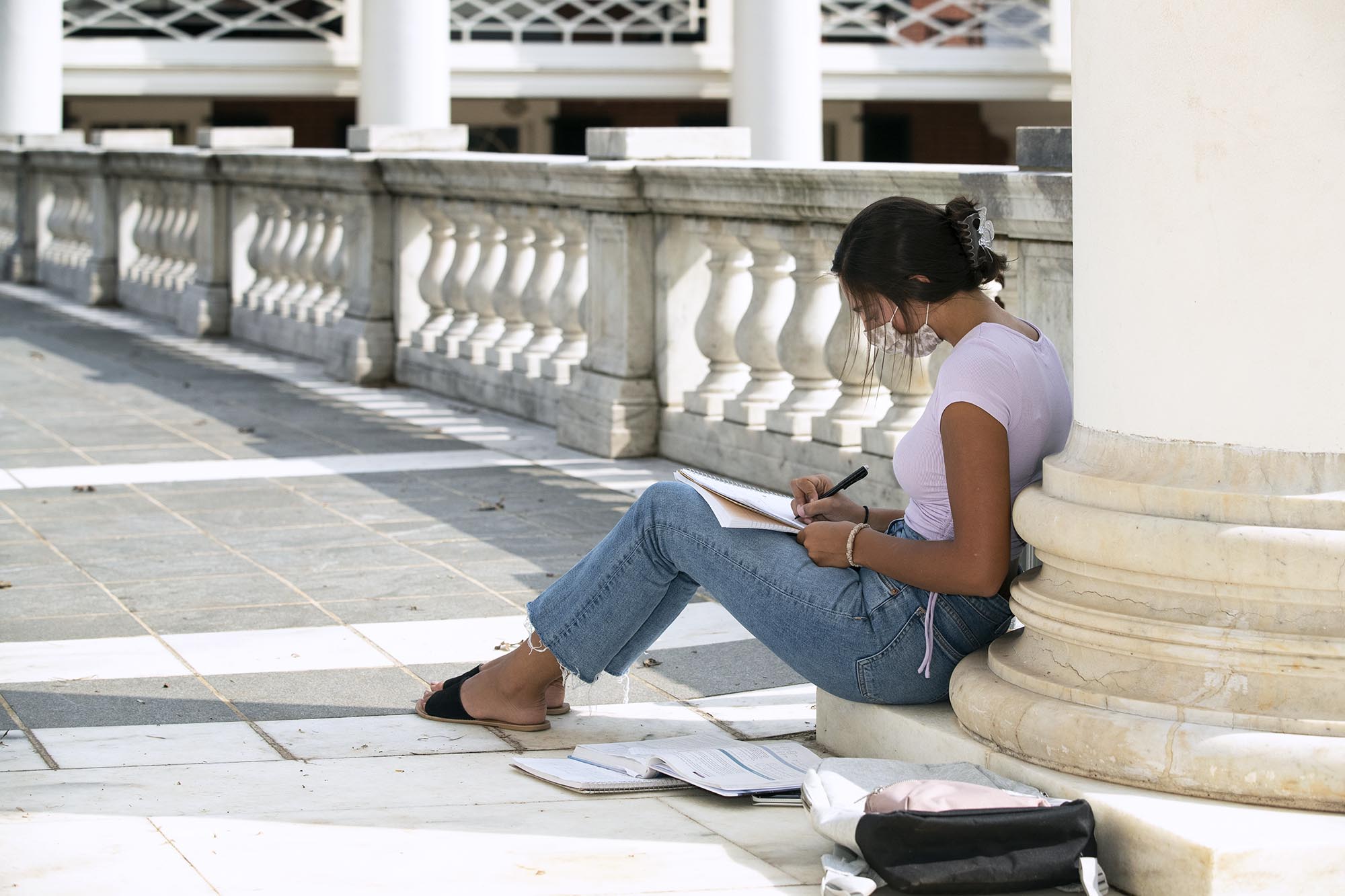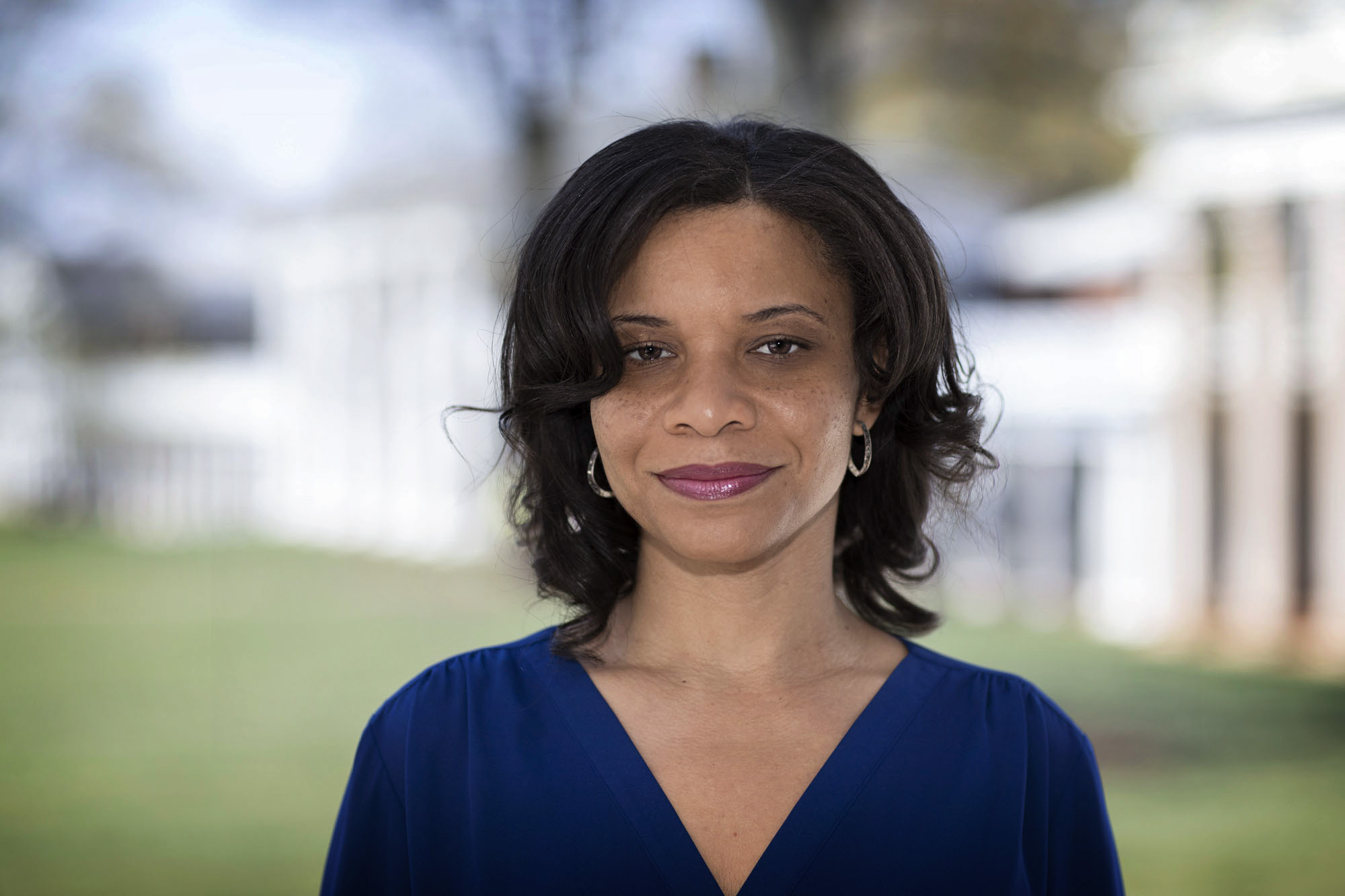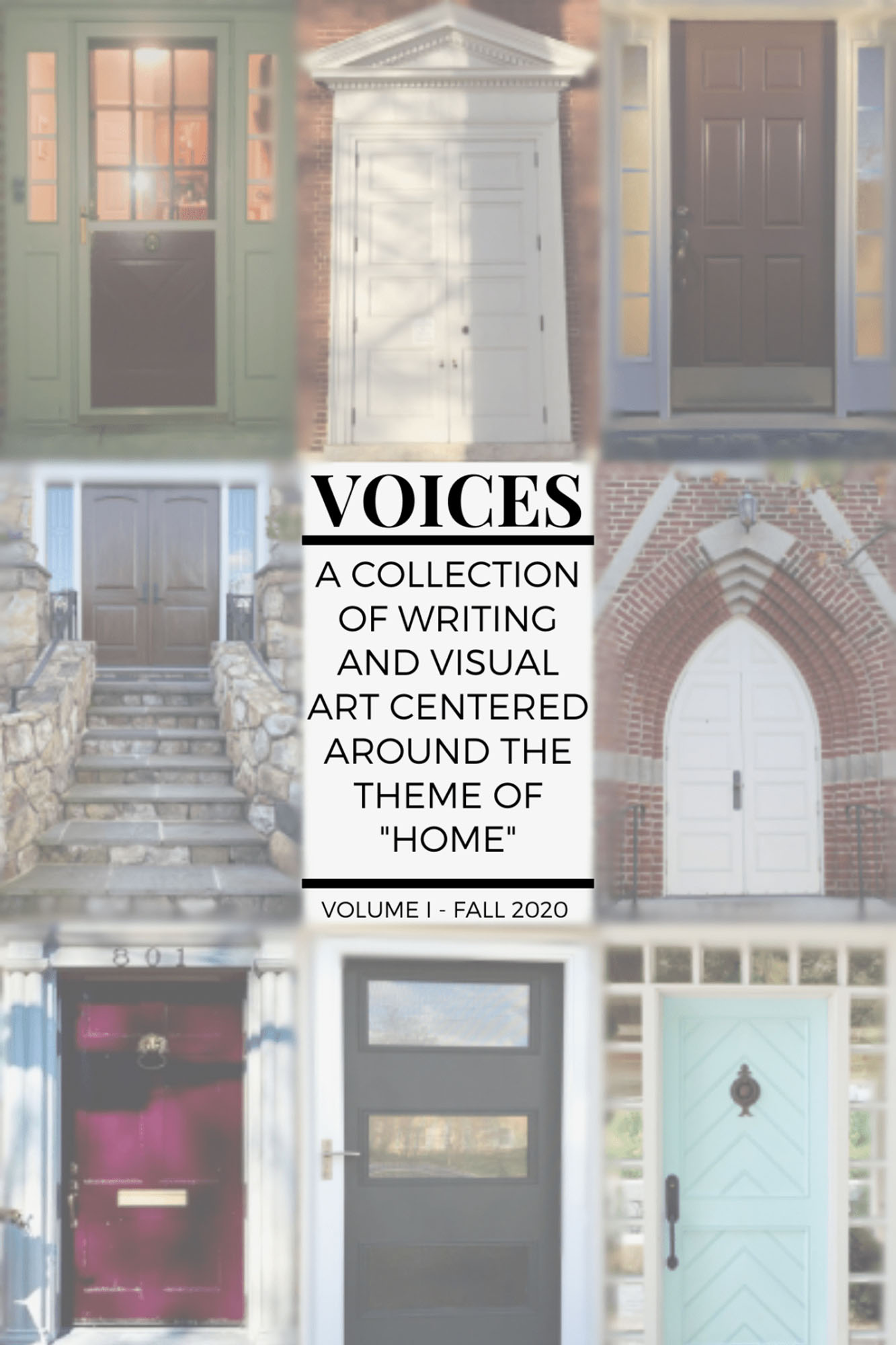“Feeling as though you are contributing to such a powerful movement while indoors [in quarantine] is an incredible opportunity that Professor LeFlouria gave each one of us,” University of Virginia student Jalecia Wright wrote about her experience in Talitha LeFlouria’s course, “Black Women and Mass Incarceration.”
How can courses with elements of community engagement continue when students are supposed to avoid others due to the coronavirus? It’s not easy, but some things are possible. Here, two faculty members share some strategies that worked in their classes.
In addition to LeFlouria, a professor of African American and African studies, and her course, assistant professor Kate Stephenson regularly teaches “Writing About Housing Equity” among other topics in the English department’s Writing and Rhetoric Program. That program oversees the roster of courses to fill first-year writing requirements, as well as the Writing Center. It Also offers many advanced writing courses in topics ranging from digital rhetoric to travel writing.
Last year, the Jefferson Trust funded the Engaged Writing Project, supporting the addition of a community engagement component in first-year writing courses like Stephenson’s. But when the pandemic hit during the spring semester, many of the students had to stop volunteering in person at the Haven, a local nonprofit that provides services for homeless people.
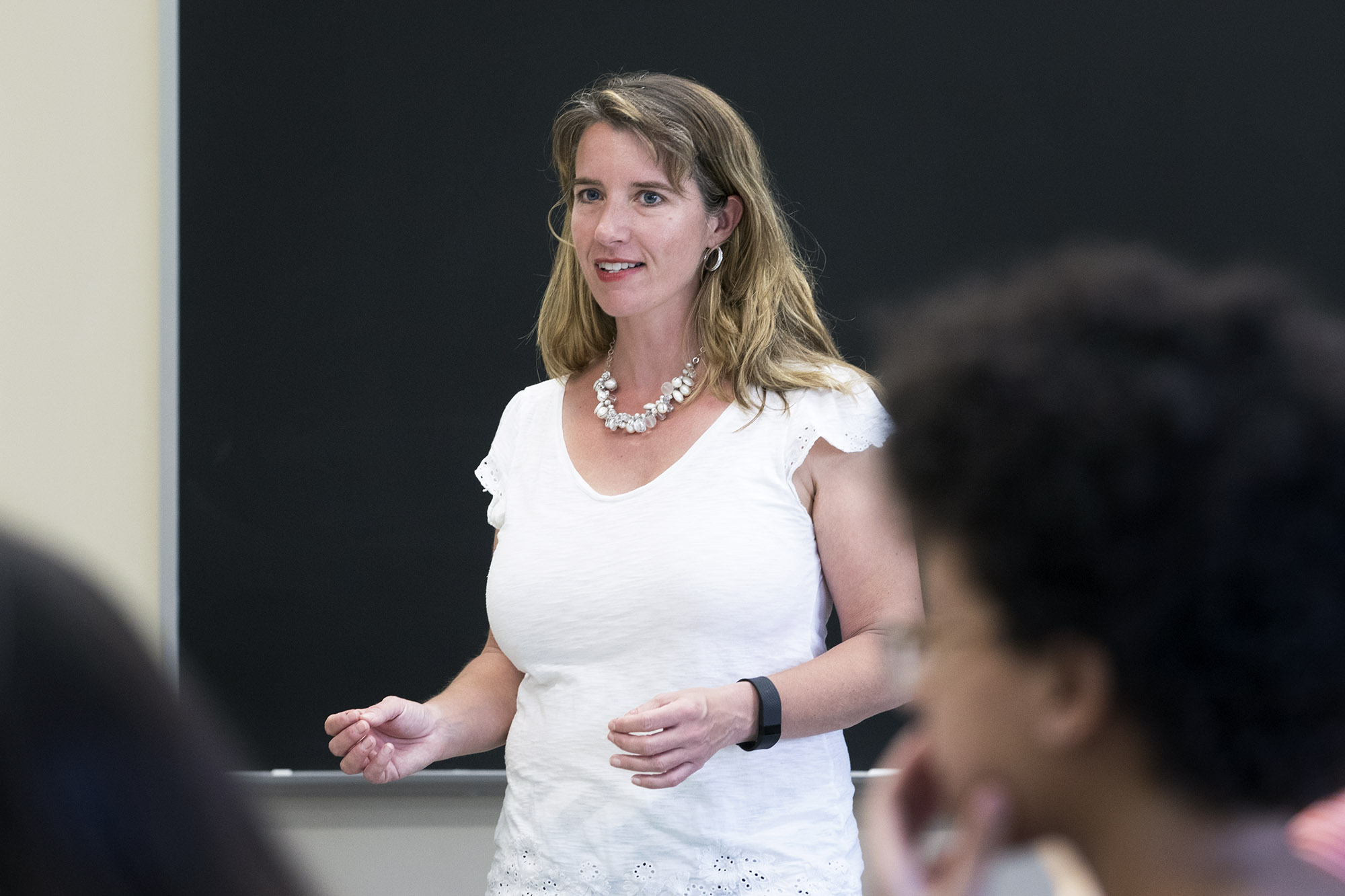
Kate Stephenson is pictured here in a 2017 seminar as she began combining community service and public writing. (Photo by Dan Addison, University Communications)
Stephenson and the Haven’s day shelter coordinator Rob White had revived the Haven Writers’ Circle in August 2019. “The writers, most of them guests of the Haven … asked if we could create a publication. We intended to do that in spring 2020, but the pandemic delayed the project until fall,” Stephenson said. The fall class focused on producing an online literary publication featuring the writing and visual arts of Haven staff, volunteers and guests.
In recent years, UVA has expanded programs and pathways for incorporating community service into student experience. Some opportunities have grown out of Madison House, the independent student volunteer center – supporting Stephenson’s and other writing courses, for example. The provost’s office and Center for Teaching Excellence are also highly involved.
Associate professor Andrew Kaufman, founder of the “Books Behind Bars” course that connects UVA students with residents at a youth correctional facility, serves as assistant director of the center’s Community-Engaged Learning Initiatives. He recorded video interviews with a range of professors about how they were changing community engagement in their classes. These and more resources are posted on the Center for Teaching Excellence’s website on “Community-Engaged Teaching in a Time of Trauma.”
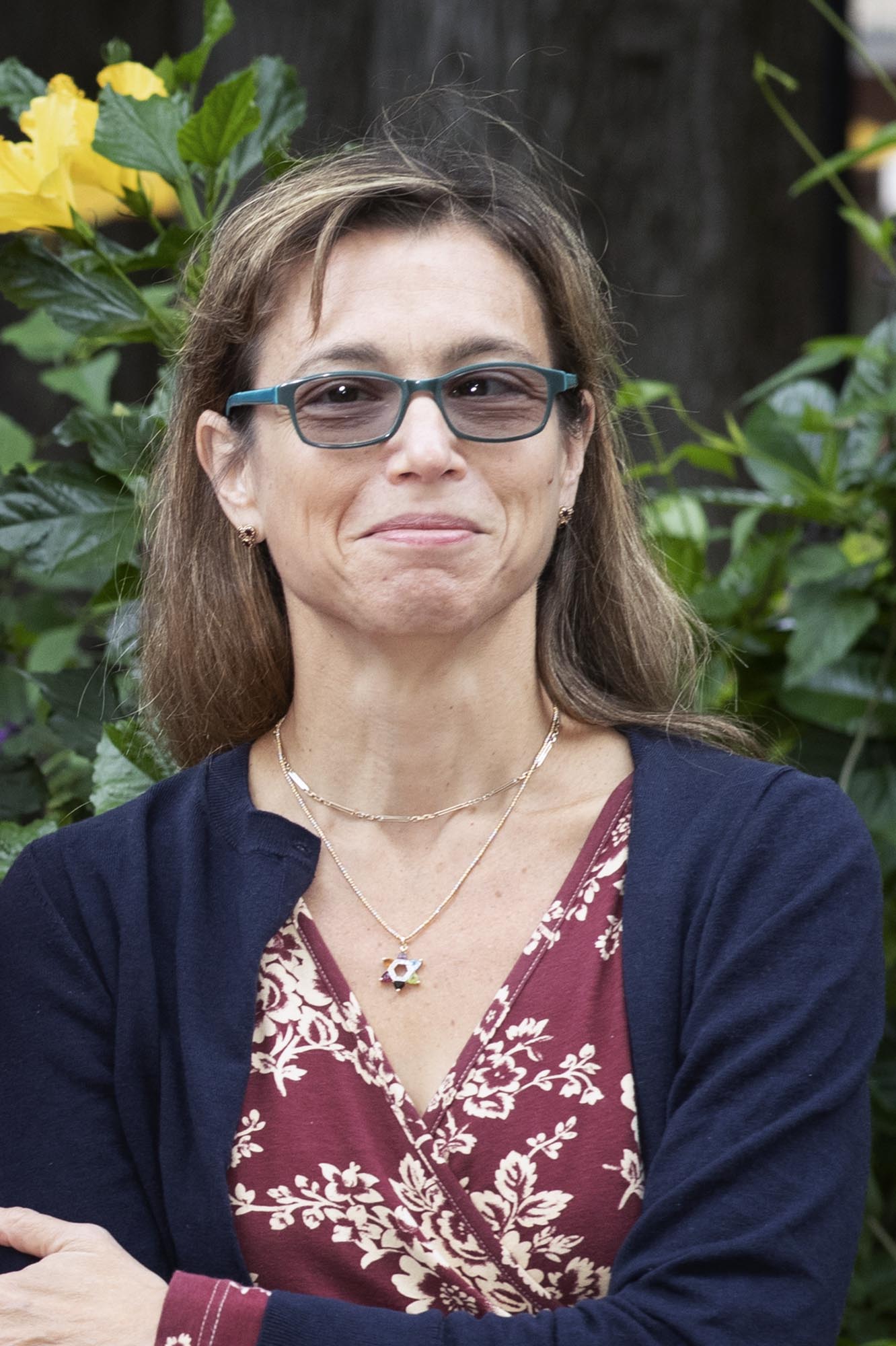
Bonnie Gordon, an associate professor of music, serves as a faculty director of UVA’s Equity Center and runs the Civic and Community Engagement program in the College of Arts & Sciences. (Photo by Dan Addison, University Communications)
Bonnie Gordon, an associate professor of music, pursues her dedication to community engagement as a faculty director of UVA’s Equity Center. She runs the center’s Civic and Community Engagement program in the College of Arts & Sciences, with support from Ellen Blackmon, curricular coordinator for community engagement in UVA’s Office of the Vice Provost for Academic Outreach, and Rose Cole, director of community engagement at Madison House. The select group of courses the Equity Center offers are two-semester blocks, in order to have more impact for the community partners and students.
With the pandemic still prevalent, making changes has been necessary, including a shift in perspective, Gordon said over the phone.
“My role is to facilitate ethical partnerships and best practices of community engagement in ways that work with the overall curriculum,” Gordon said. “We want to remain respectful and make sure students can be helpful.”
Teachers must be mindful because even though they want students to be involved, they don’t want to add any burdens to community partners, Gordon said.
For the provost’s office, Blackmon is also building a network for bringing together faculty, students and community members, using Engaged UVA as a site that aggregates information and resources happening around Grounds.
Students Work on National Issue for Black Women: Mass Incarceration
When LeFlouria, the Lisa Smith Discovery Associate Professor in the Carter G. Woodson Institute for African American and African Studies, wanted to revise her fall 2020 course, “Black Women and Mass Incarceration,” to include a service-learning component, she had to figure out how to make that work under COVID restrictions that prevented in-person contact.
She also sought to align it with “the University’s mission to support diversity, equity and inclusion, and also to bring in marginalized voices not usually welcome in academic settings,” she said.
LeFlouria developed internships last fall that paired students with leading local and national re-entry organizations that support incarcerated and formerly incarcerated women, all six of them run by Black women who had spent time in prison. The organizations included Lending Hands, founded by Cherry Henley, in Charlottesville; the Kemba Smith Foundation in Richmond; and A New Way of Life Re-entry Project in California.
“The students were able to do research, to co-facilitate and participate in programs or in developing programs that assist hundreds of women and young people,” LeFlouria said.
In weekly classes and readings, they discussed the history of Black women and mass incarceration and its connections to the legacy of slavery. They began their internships after five weeks of virtual classroom instruction, and their work culminated in a virtual event the students organized in December, featuring all the leaders with whom they worked. The online conference drew more than 100 viewers at UVA and across the country.
